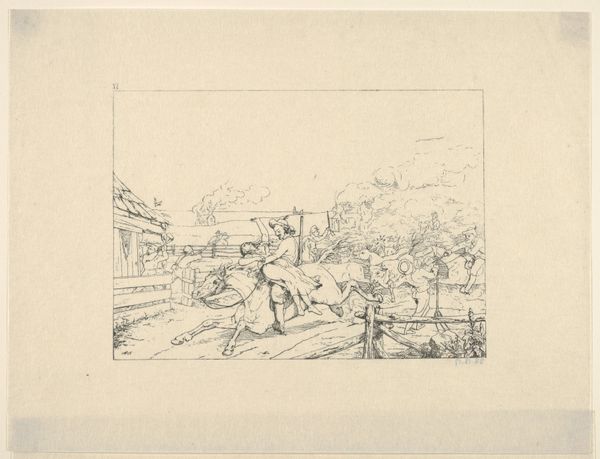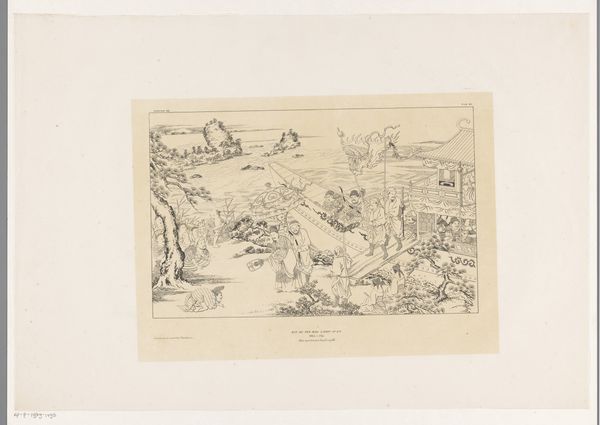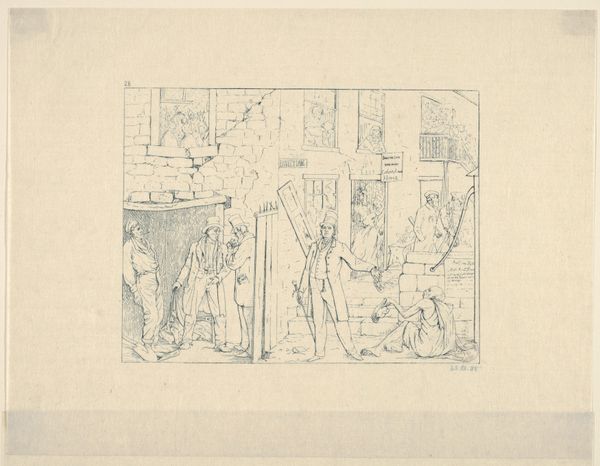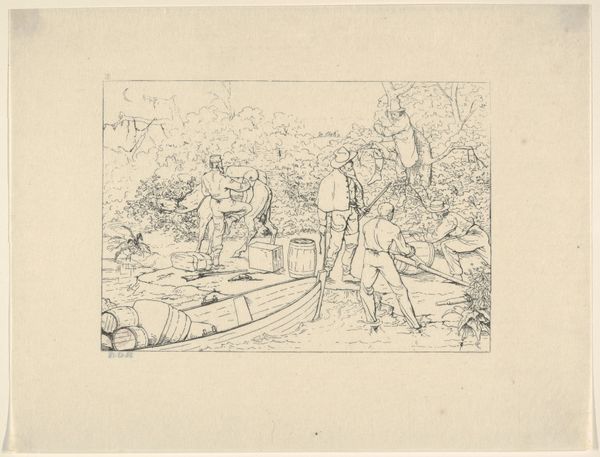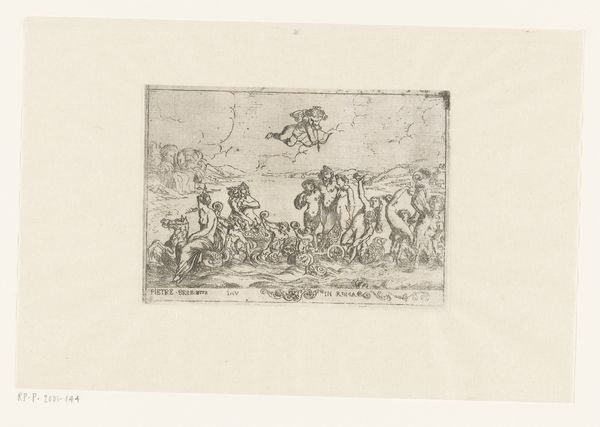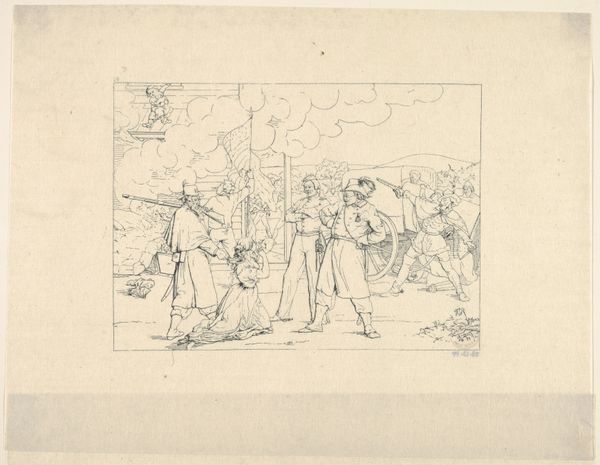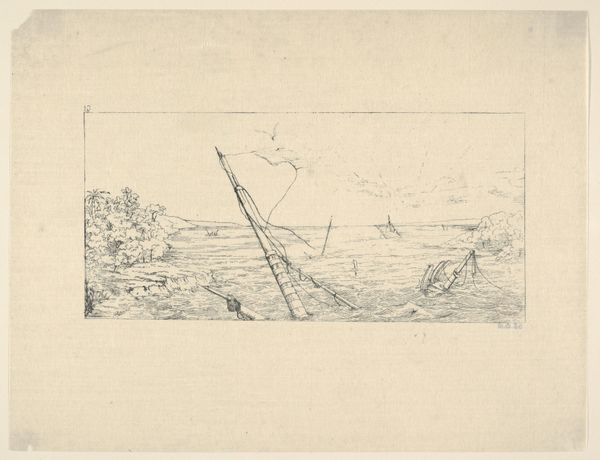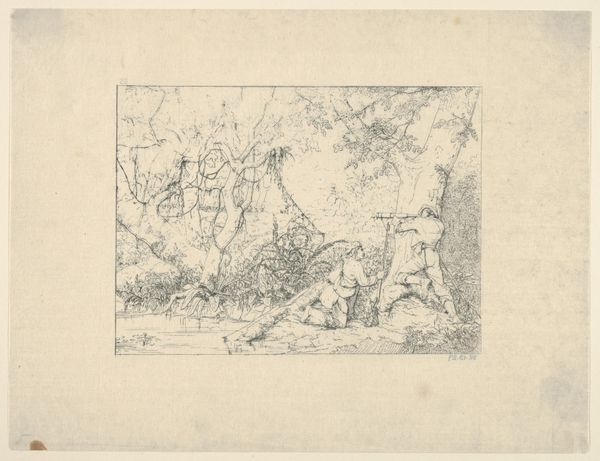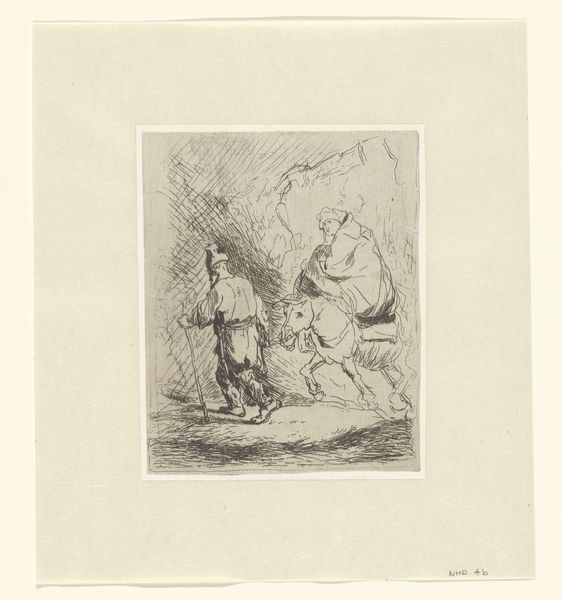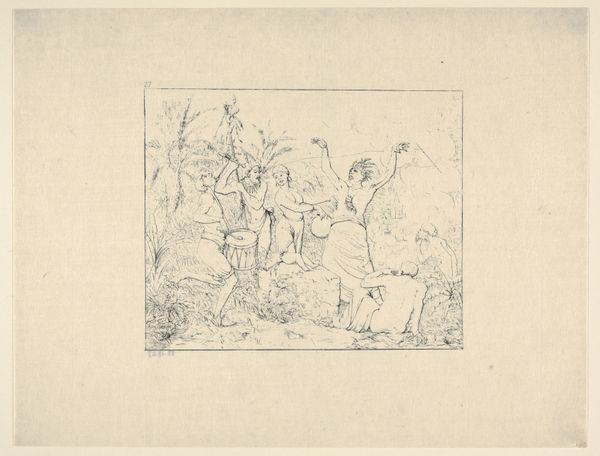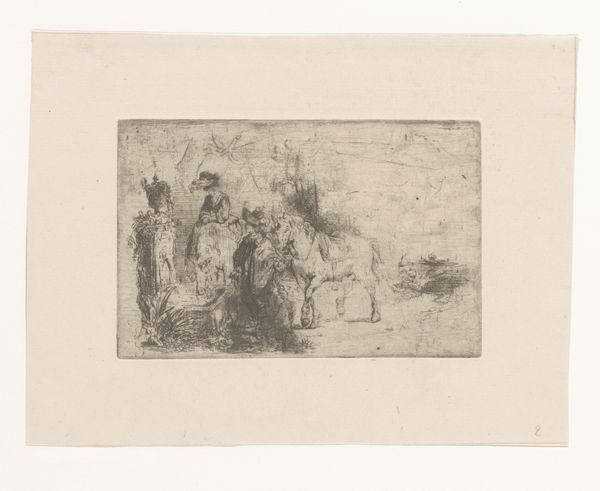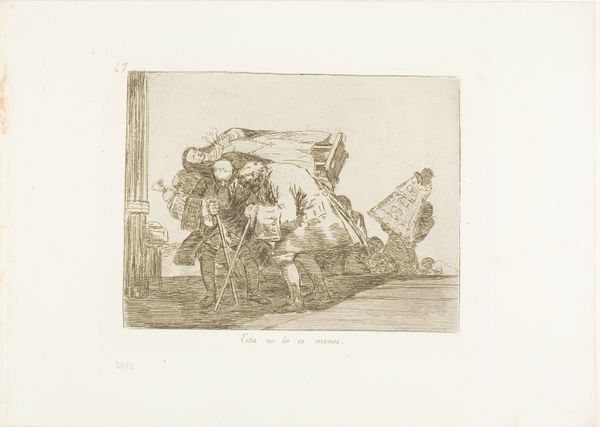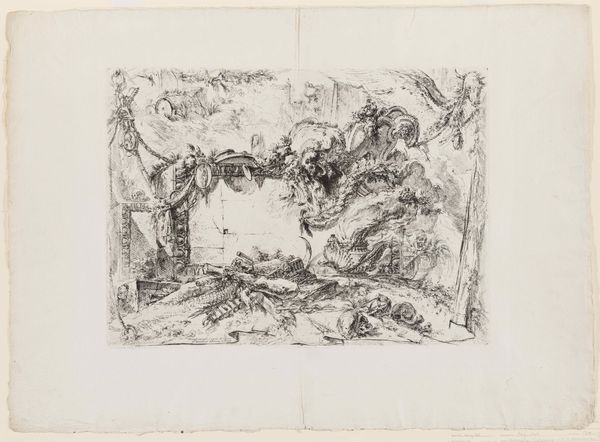
Tracks of the Armies (from Confederate War Etchings) 1861 - 1863
0:00
0:00
drawing, print, etching
#
drawing
# print
#
etching
#
war
#
landscape
#
soldier
#
pen-ink sketch
#
men
#
history-painting
#
realism
Dimensions: Image: 4 13/16 x 6 5/8 in. (12.2 x 16.8 cm) Sheet: 7 15/16 x 10 7/16 in. (20.2 x 26.5 cm)
Copyright: Public Domain
Curator: Here we have "Tracks of the Armies," an etching created by Adalbert John Volck sometime between 1861 and 1863, part of his "Confederate War Etchings" series. Editor: It’s bleak. The scene feels utterly devastated—a bombed-out building, lifeless figures strewn about. The single standing figure, is he in despair, shaking his fists at the sky? The rendering looks sketchy, but immediate and raw. Curator: Volck, a dentist by trade, was a staunch Confederate sympathizer. He used his art to promote the Confederate cause and critique the Union. This particular etching really encapsulates the destruction he attributed to the Union Army's advance. The ruin becomes a powerful symbol. Editor: Absolutely. But seeing it now, far removed from the specific context Volck intended, the ruin speaks more broadly to the brutal costs of war, the destruction of communities and lives, regardless of which side is responsible. I’m wondering, how did the Confederate government utilize imagery like this to galvanize public sentiment and resources towards the war effort? Curator: Confederate iconography was crucial. The etchings like this, circulated widely, provided a narrative of Southern suffering and Northern aggression. They visually reinforced a sense of shared identity and grievance, vital for maintaining support. The romanticized victimhood of the South worked as propaganda. Editor: Victimhood narratives often conveniently omit or obscure systemic oppressions that precipitated conflict in the first place. In this case, that’s the institution of slavery, absolutely central to the Confederate cause, rendered invisible here. The image appeals to emotion, not critical thought, masking deeper truths about power and injustice. Curator: I agree, we need to critically assess Volck's perspective. By examining these etchings, we see how art becomes a tool to shape historical narratives, and, frankly, justify morally reprehensible actions. His etchings reveal an attempt to build and manipulate sentiment through visual messaging. Editor: Precisely. And analyzing them now compels us to deconstruct these loaded narratives, reveal the human cost obscured by political agendas, and ask critical questions about the lingering echoes of such ideologies today. It’s important not to allow the romance to occlude reality. Curator: Indeed. Viewing this today allows us to investigate the enduring role of images in shaping public opinion and allows one to better understand how imagery promotes skewed historical representation. Editor: Absolutely. Thinking about the ways historical perspectives and representations play into present-day conversations is one of the most important tasks that we face.
Comments
No comments
Be the first to comment and join the conversation on the ultimate creative platform.
